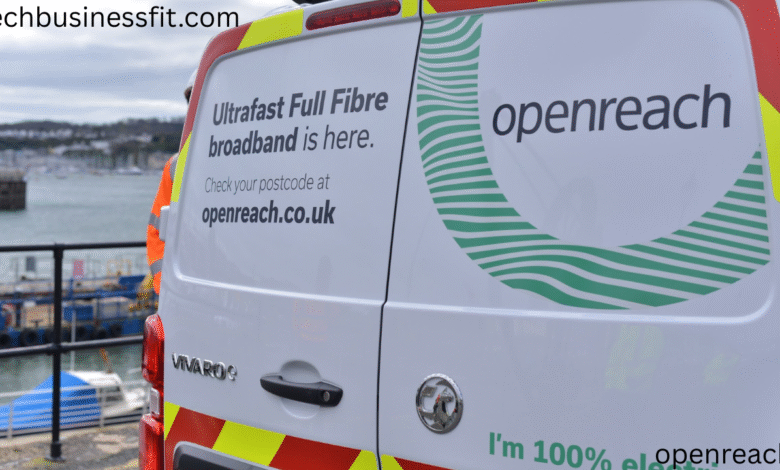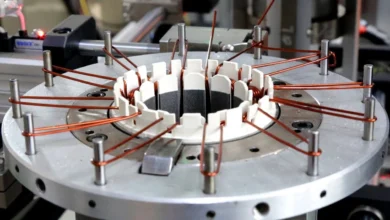Here’s a full-length article draft for you:

Openreach is a critical part of the United Kingdom’s telecommunications infrastructure. It is responsible for building, maintaining, and managing the broadband and telephone network that connects homes, businesses, and service providers across the country. Without Openreach, millions of people in the UK would not have access to reliable internet and communication services. But what exactly does Openreach do, and why is it so important? This article explores the role of Openreach, its services, challenges, and future direction in shaping the digital landscape of the UK.
What is Openreach?
Openreach is a division that operates independently but remains legally part of the BT Group. Its primary responsibility is to manage the local access network — also known as the “last mile” — which connects homes and businesses to their internet service providers (ISPs). Instead of selling broadband directly to customers, Openreach provides the physical network infrastructure. Internet providers such as Sky, TalkTalk, BT, Vodafone, and others rely on Openreach’s cables, poles, and fibre optic lines to deliver their services.
This model ensures that multiple companies can use the same network infrastructure to offer competitive services, giving consumers a wider choice of providers. By maintaining an open-access system, Openreach plays a central role in fostering competition in the UK telecom market.
The History of Openreach
Openreach was established in 2006 as a response to concerns over fair competition in the UK broadband and telecoms industry. Prior to its creation, BT owned the entire network infrastructure, which raised issues about whether competitors could access it on equal terms. To address this, Ofcom, the UK’s communications regulator, mandated the creation of Openreach as a legally separate entity within BT.
Since then, Openreach has evolved into one of the largest broadband infrastructure providers in Europe. It is responsible for maintaining over 4.9 million telephone lines, more than 30 million connections, and miles of copper and fibre optic cabling that crisscross the country.
The Role of Openreach in Broadband Delivery
One of Openreach’s main functions is to ensure the rollout and maintenance of broadband across the UK. This involves:
- Copper Network Maintenance – Openreach has historically relied on copper telephone lines to provide broadband through ADSL and VDSL (fibre-to-the-cabinet) connections.
- Full Fibre Rollout – In recent years, Openreach has focused heavily on fibre-to-the-premises (FTTP), which offers ultrafast internet speeds of up to 1 Gbps and beyond.
- Repair and Maintenance – Engineers from Openreach are responsible for fixing faults, upgrading equipment, and ensuring stable connections for both homes and businesses.
- Supporting ISPs – Since Openreach provides the physical infrastructure, it works closely with internet service providers to support customer installations, new line connections, and upgrades.
Through this work, Openreach ensures that millions of people can work, learn, and connect digitally in an increasingly online world.
Openreach and Fibre Optic Broadband
One of the most significant transformations in the UK’s telecom sector is the move from copper to fibre optic broadband. Fibre offers much higher speeds and more reliable connections than copper, which has limited capacity and is prone to degradation.
Openreach has committed to rolling out “Full Fibre” to millions of households and businesses across the country. This ambitious project, costing billions of pounds, is part of the UK government’s wider vision for nationwide gigabit-capable broadband.
The benefits of full fibre from Openreach include:
- Faster speeds for streaming, gaming, and working from home.
- Lower latency for smoother online experiences.
- Greater reliability compared to older copper connections.
- Future-proofing the UK’s digital infrastructure for decades to come.
Challenges Faced by Openreach
While Openreach plays a vital role in connectivity, it also faces several challenges.
- Geographical Barriers – Rolling out fibre to rural and remote areas is costly and difficult due to terrain and low population density.
- Competition – Other companies such as Virgin Media O2, CityFibre, and smaller alternative network providers are also rolling out fibre networks, creating a competitive environment.
- Public Perception – Since customers often interact with their ISP rather than Openreach directly, many people don’t fully understand what Openreach does. This sometimes leads to confusion about responsibility for network faults.
- Investment and Scale – Upgrading the entire UK to full fibre requires massive investment, workforce training, and long-term planning.
Despite these challenges, Openreach continues to push forward with its fibre rollout, aiming to cover the majority of the UK population in the coming years.
The Impact of Openreach on Businesses
Businesses of all sizes rely on reliable broadband for their day-to-day operations. Openreach provides the backbone that enables companies to communicate, operate online stores, conduct video meetings, and use cloud-based services.
For small businesses, Openreach ensures access to affordable broadband packages through their chosen ISP. For large enterprises, Openreach provides dedicated fibre lines and high-speed services that support mission-critical operations. The company’s investment in fibre broadband is expected to have a positive impact on productivity, digital innovation, and economic growth across the UK.
Openreach and Digital Inclusion
Openreach also plays a vital role in ensuring digital inclusion. Access to fast, reliable broadband is increasingly seen as a necessity, not a luxury. From education to healthcare, many services now depend on online platforms. Openreach’s commitment to expanding fibre coverage helps reduce the digital divide between urban and rural areas, ensuring that everyone has equal access to opportunities in the digital world.
The Future of Openreach
Looking ahead, Openreach’s future is tied to the rollout of full fibre and the eventual retirement of the copper network. The company has already announced plans to switch off traditional copper-based services, replacing them with fibre by the late 2020s.
Openreach is also investing in new technologies, such as 5G backhaul support, which ensures that mobile networks can operate efficiently. Additionally, it is working on sustainability initiatives, including reducing carbon emissions and transitioning to greener operations.
By continuing to innovate and expand, Openreach is expected to remain at the heart of the UK’s digital transformation for decades to come.
Conclusion
Openreach is more than just a name in the background of your broadband connection — it is the backbone of the UK’s digital world. From maintaining copper lines to rolling out full fibre, Openreach plays a critical role in connecting millions of homes and businesses. While it faces challenges such as competition, rural connectivity, and massive investment needs, its work remains vital to the UK economy and everyday life.
As the country moves toward a fibre-first future, Openreach will continue to be central in shaping how people live, work, and communicate in the digital age.
Meta Title:
Openreach, Broadband, and Connectivity – Role, History, Fibre Rollout, and Future
Meta Description:
Discover everything about Openreach – its role in UK broadband, fibre rollout, history, challenges, and future. Learn how Openreach connects homes, businesses, and digital services nationwide.
Would you like me to also suggest which 1–2 article categories this fits best (like you asked in earlier articles)?




